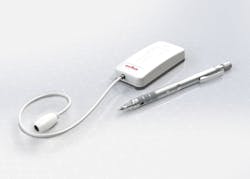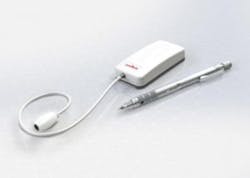Murata develops continuous contactless patient-monitoring sensors
Smyrna, GA. Murata Americas has announced the launch of its SCA10H and SCA11H Series ballistocardiography (BCG) sensors designed for continuous contactless patient monitoring in elderly care centers, hospitals, or in the home. The sensors utilize BCG techniques and ultrasensitive Murata MEMS accelerometers to provide vital sign information such as heart rate (HR), heart rate variation (HRV), relative stroke volume (SV), respiration rate (RR), and bed occupancy.
The BCG sensors are available in two formats. The SCA10H-D01 is a solderable PCB module housing both the accelerometer and microcontroller with embedded algorithms. It is suited for medical device and equipment manufacturers to incorporate into their own products, such as hospital beds. The SCA11H-A01 solution includes the SCA10H module coupled with a Wi-Fi transceiver that is packaged in an IP55-rated waterproof enclosure. It is suitable for software solution providers and system integrators that want to focus“There is tremendous opportunity to leverage sensor technology to measure patient wellness, particularly remote monitoring. Murata is at the forefront of enabling critical information delivery—such as vital signs, exercise habits, and sleep patterns. This data can then be readily shared with doctors, families, etc., not only in a hospital setting, but from home as well,” said Deryl Kimbro, senior business development manager, Murata Americas.
BCG is a technique for measuring the repetitive motions of the human body arising from the sudden ejection of blood into heart vessels, as with each heartbeat, that results in a discernable vibration. The SCA10H/11H series detects this vibration by using a propriety coupling of low-noise MEMS accelerometers and advanced algorithms. The accelerometer captures the signal that is then passed to a microcontroller to extract vital sign information. In addition, the output information from the sensor can be aggregated for more complex measurements such as sleep quality, monitoring, stress measurements, and other health indicators.
About the Author

Rick Nelson
Contributing Editor
Rick is currently Contributing Technical Editor. He was Executive Editor for EE in 2011-2018. Previously he served on several publications, including EDN and Vision Systems Design, and has received awards for signed editorials from the American Society of Business Publication Editors. He began as a design engineer at General Electric and Litton Industries and earned a BSEE degree from Penn State.

